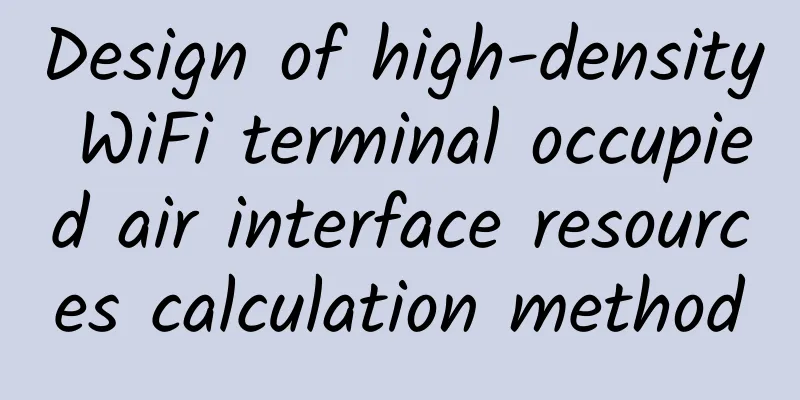Design of high-density WiFi terminal occupied air interface resources calculation method

|
In places where high-density WI-FI terminals are used, the more terminals that share air interface resources, the less air interface resources each terminal will occupy, thus affecting the overall throughput. So how do we calculate the air interface resources occupied by terminals in a Wi-Fi network environment? In this issue, we will discuss this issue.
First let's take a simple example: If there is only one AP in a room and only one laptop connected (see the figure below) The maximum TCP/IP transmission rate of the laptop is 220Mbps. Since there are no other devices connected to the AP, the laptop can monopolize 100% of the air interface resources. Therefore, it should be no problem to achieve a TCP/IP transmission rate of 220Mbps. Now we have another iPad connected to the AP The TCP/IP transmission rate of iPad is 70Mbps. Now that there are two terminal devices connected to the AP, each terminal device needs to share the air interface resources (50% each). As a result, the original TCP/IP transmission rate will be halved - the laptop's TCP/IP transmission rate will be reduced from 220Mbps to 110Mbps; the iPad's TCP/IP transmission rate will be reduced from the original 70Mbps to 35Mbps. The overall Wi-Fi network throughput will also be reduced from 220 Mbps when only the laptop is connected to 145Mbps. This shows the impact of the increase in the number of terminals on the Wi-Fi network throughput. In the above examples, we assume that the channel utilization rate can reach 100%, but in reality the channel utilization rate can generally only reach about 80%. So if we want to estimate how many APs are needed in a certain environment to ensure that users can obtain a transmission rate that meets their applications, what parameters do we need? 1. The TCP/IP bandwidth required by each terminal (Min. Bandwidth required by client) – This mainly depends on what application the terminal is running (web browsing, video streaming, voice...) 2. Maximum TCP/IP transmission rate of each terminal (Raw Bandwidth of client) 3. Number of clients Many people may be confused at this point. How to obtain these parameters? Don't worry, we will give the calculation formula below. 1. (Bandwidth required by the terminal / Maximum TCP/IP transmission rate of the terminal) x 100% = Air port percentage 2. (Air interface percentage x number of terminals) / 0.8 = Number of radios required The number of radios required is not equal to the number of APs required, because one AP can support multiple radios. |
<<: Reject poor digital experience! Riverbed creates agile and visual management solutions
>>: 7 ways artificial intelligence is impacting enterprise IT infrastructure
Recommend
Why does the wireless router need to be restarted? You will know after reading this
Wireless routers have become an indispensable net...
5G unlocks new solutions for the medical industry
5G unlocks new solutions for the medical industry...
Small functions of wireless routers make your Wi-Fi more useful
Have you just bought a wireless router and you ju...
What happens when SDN meets 5G?
SDN is a profound change to traditional IP networ...
The United States suddenly announced measures to "clean up the Internet" and explicitly named Huawei and BAT
This article is reprinted with permission from AI...
What is the network VRRP protocol, and can it really solve network stability issues?
With the rapid development of the Internet, vario...
JD Interview: What are the differences between Cookie, Session and Token?
As one of the three giants of traditional e-comme...
5 ways 5G will change the world
As communications technology goes, the switch fro...
Listen to what the broadband master said: How often should the router be turned off? Otherwise, the WiFi will become slow
Tomorrow is the end of the holiday. If you stay a...
Huawei China ICT Ecosystem Tour 2018 Series of Activities Invite You to Win the "Ecological Era" Together
[51CTO.com original article] In March this year, ...
Halfway through 2021, China Broadcasting and Television 5G begins to accelerate
2021 is already halfway through, and China Radio ...
The number of 5G package users far exceeds the number of 5G mobile phone users. Are you infected by 5G?
If we distinguish by telecommunications scale, th...
VMISS newly launched Hong Kong BGPV3 node, 20% off, starting from 21 yuan/month, optional CN2 GIA/9929/CMIN2, etc.
VMISS has newly launched the Hong Kong BGP V3 nod...
Kubernetes Gateway API v1.1 Interpretation, do you understand it?
A few days ago, the K8s Network SIG released the ...









